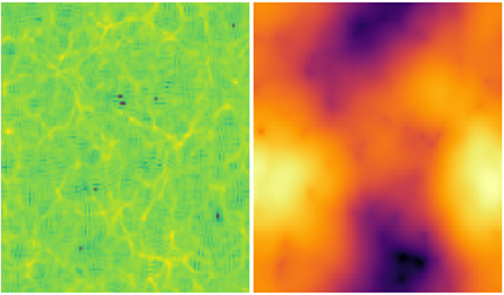Trial lecture - time and place
08.11.2019 10:15, Lille fysiske auditorium V232
"The current Hubble constant tension"
Conferral summary (in Norwegian)
Einsteins generelle relativitetsteori kan brukes til å beskrive tyngdekraft og universets utvikling med høy nøyaktighet, men innen kosmologi er det fortsatt flere åpne spørsmål ved teorien.
Denne doktorgradsavhandlingen utforsker alternative teorier for tyngdekraft ved hjelp av spesialutviklede numeriske simuleringer. Her diskuteres hittil ukjente fenomener i enkelte teorier, og forslag til hvordan man kan skille mellom disse teoriene med observasjoner.
Simulations Beyond Einstein
Einstein's theory of general relativity is currently our best model for how gravity works. It can be used to predict motions of planets in our Solar System, the speed-up of clocks on GPS satellites, and the gravitational waves from merging black holes. General relativity has been used to model the history and expansion of the Universe as a whole, but on these vast scales, problems start appearing. To make the theory match our observations, we have to add two components we don't know much about, and that we have never observed: dark matter and dark energy.
To explain the shortcomings of general relativity, it is important to explore alternative theories of gravity.
In my work, I have used special designed computer simulations to better understand specific theories of modified gravity, and to investigate the simplifying assumptions that are often applied by researchers studying these theories. I have also studied possible new observational signatures that can be used to distinguish between different gravitational theories.
My work explores new phenomena in one specific modified gravity theory, called disformal quintessence. Furthermore, it is showed that in some cases one cannot ignore commonly neglected terms in the equations.

panel shows the distribution of galaxies in the simulation box, with
bright colour indicating a high density of galaxies. The right-hand
panel shows the disformal quintessence field in the same simulation;
areas with high density of galaxies has a low field value and areas of
low density has a higher value. Illustration: Robert Hagala
